
How to Use MPU-6050: Examples, Pinouts, and Specs
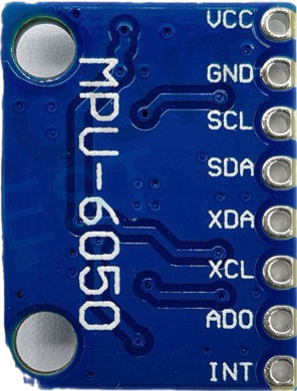
 Design with MPU-6050 in Cirkit Designer
Design with MPU-6050 in Cirkit DesignerIntroduction
The MPU-6050 is a 6-axis motion tracking device that integrates a 3-axis gyroscope and a 3-axis accelerometer into a single chip. This compact and versatile sensor is widely used in applications requiring motion sensing and orientation detection. Its ability to measure angular velocity and linear acceleration makes it ideal for robotics, drones, smartphones, gaming devices, and wearable technology.
The MPU-6050 also features a Digital Motion Processor (DMP) that can process complex motion algorithms internally, reducing the computational load on the host microcontroller. It communicates via the I2C protocol, making it easy to interface with microcontrollers like the Arduino UNO.
Explore Projects Built with MPU-6050
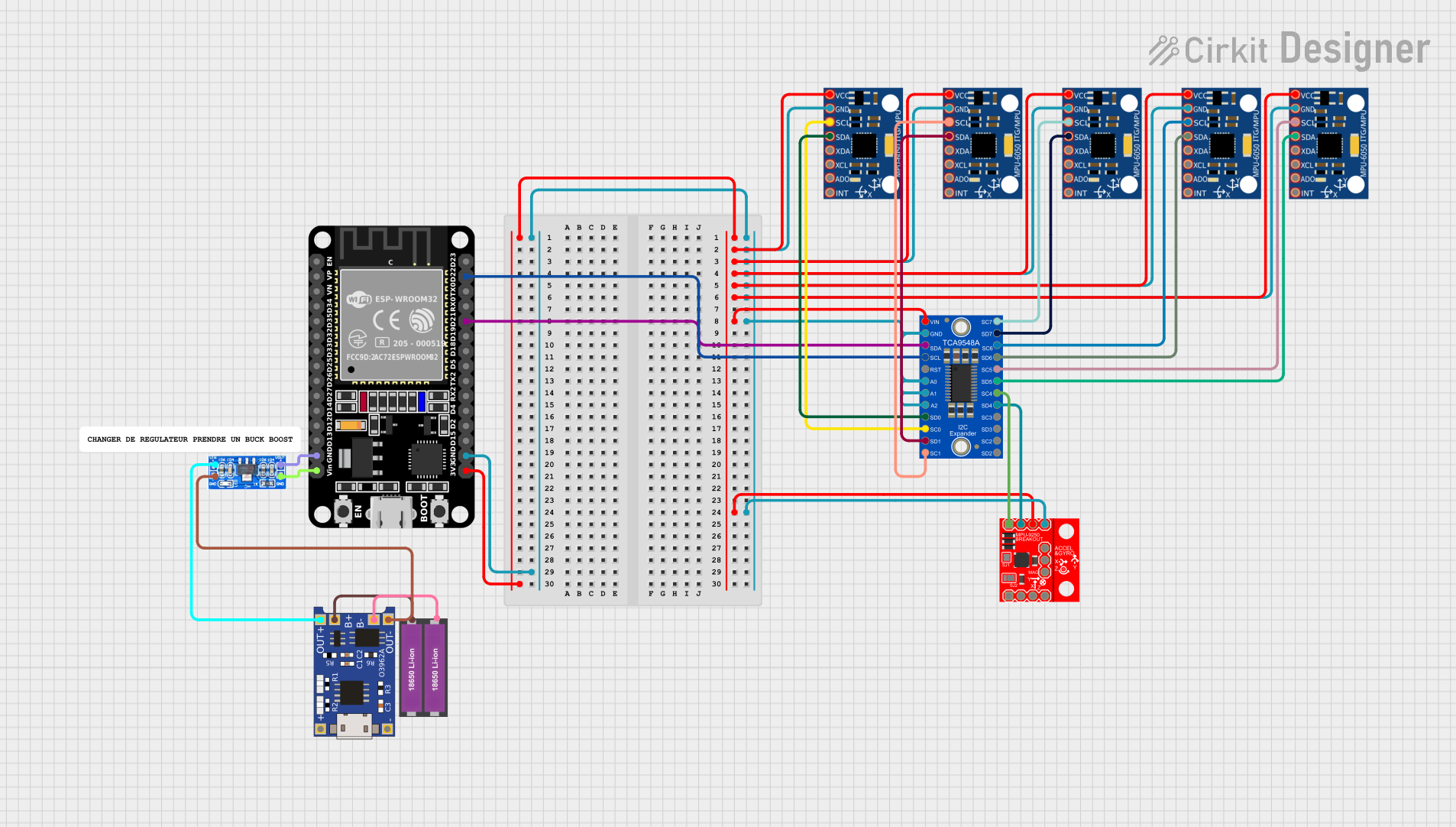
 Open Project in Cirkit Designer
Open Project in Cirkit Designer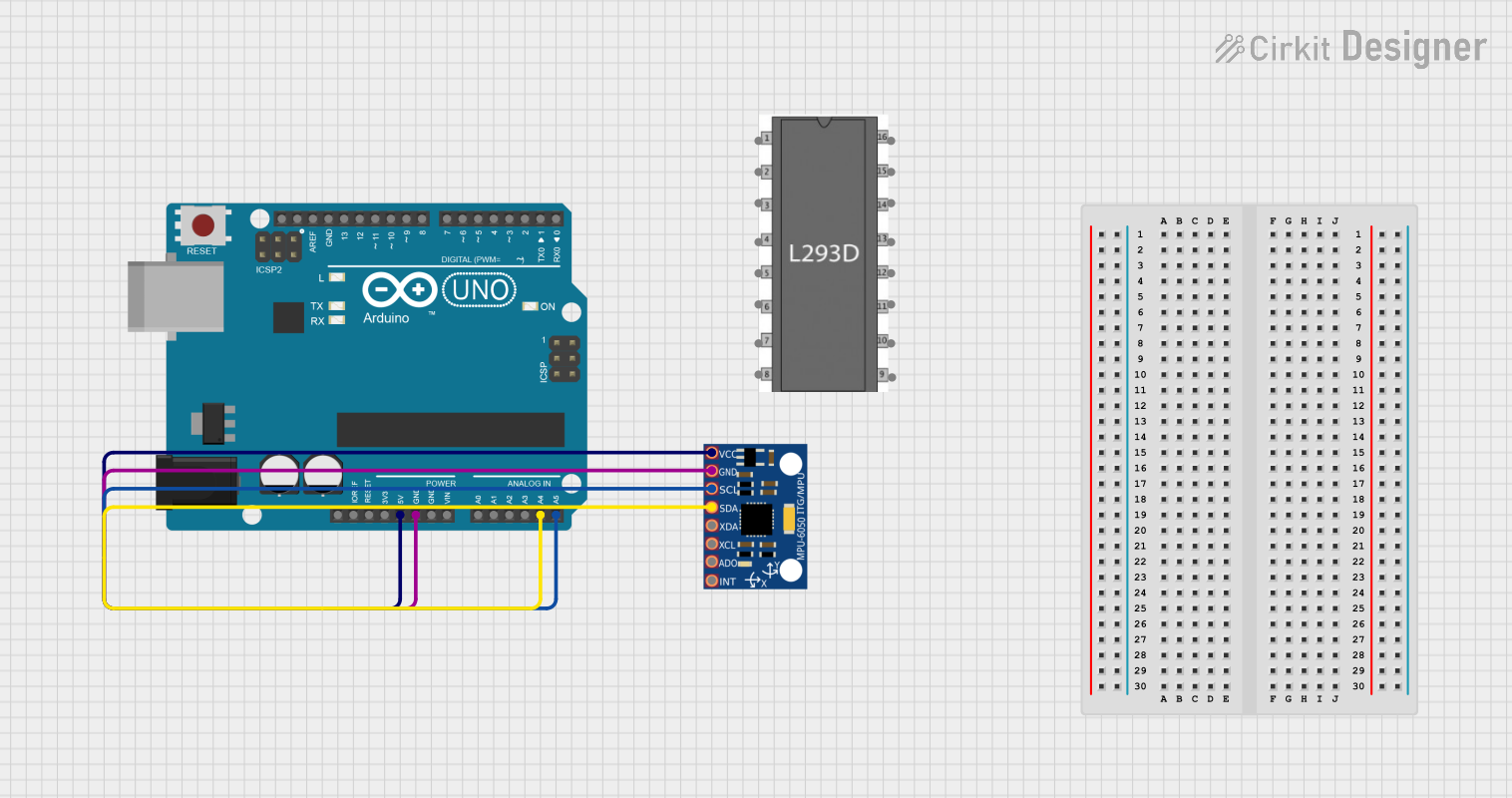
 Open Project in Cirkit Designer
Open Project in Cirkit Designer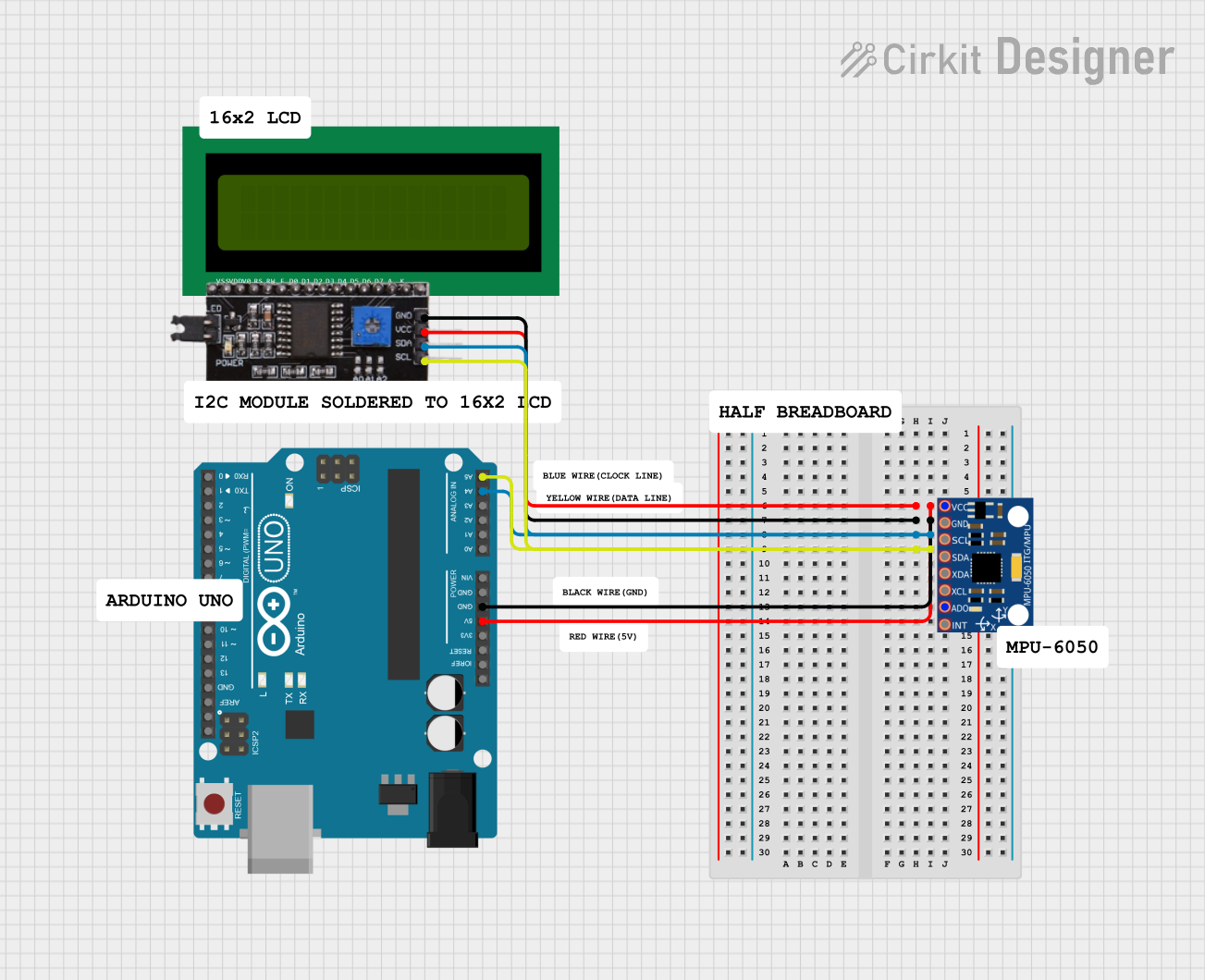
 Open Project in Cirkit Designer
Open Project in Cirkit Designer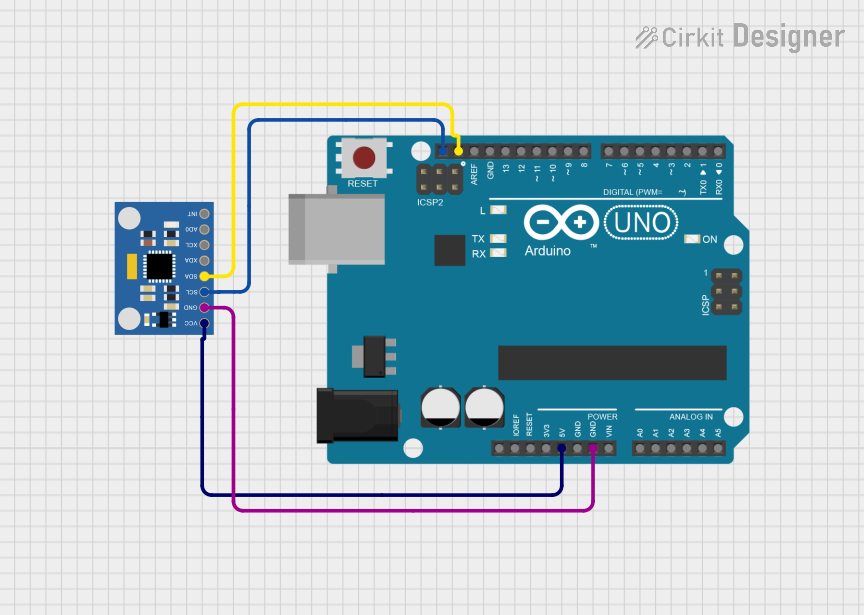
 Open Project in Cirkit Designer
Open Project in Cirkit DesignerExplore Projects Built with MPU-6050

 Open Project in Cirkit Designer
Open Project in Cirkit Designer
 Open Project in Cirkit Designer
Open Project in Cirkit Designer
 Open Project in Cirkit Designer
Open Project in Cirkit Designer
 Open Project in Cirkit Designer
Open Project in Cirkit DesignerTechnical Specifications
Key Technical Details
- Supply Voltage: 2.375V to 3.46V (3.3V typical)
- Logic Voltage: 3.3V (compatible with 5V logic via pull-up resistors)
- Gyroscope Range: ±250, ±500, ±1000, ±2000 degrees/second
- Accelerometer Range: ±2g, ±4g, ±8g, ±16g
- Communication Protocol: I2C (default address: 0x68 or 0x69)
- Operating Temperature: -40°C to +85°C
- Power Consumption: 3.9mA (typical in active mode)
- Package: 4x4x0.9mm QFN
Pin Configuration and Descriptions
The MPU-6050 has 8 pins. Below is the pinout and description:
| Pin | Name | Description |
|---|---|---|
| 1 | VCC | Power supply input (2.375V to 3.46V). Typically connected to 3.3V. |
| 2 | GND | Ground connection. |
| 3 | SCL | I2C clock line. Connect to the microcontroller's SCL pin. |
| 4 | SDA | I2C data line. Connect to the microcontroller's SDA pin. |
| 5 | XDA | Auxiliary I2C data line (used for connecting additional sensors). |
| 6 | XCL | Auxiliary I2C clock line (used for connecting additional sensors). |
| 7 | AD0 | I2C address select. Connect to GND for address 0x68 or VCC for address 0x69. |
| 8 | INT | Interrupt output. Used to signal the host microcontroller of data availability. |
Usage Instructions
How to Use the MPU-6050 in a Circuit
- Power the Sensor: Connect the VCC pin to a 3.3V power source and the GND pin to ground.
- I2C Communication: Connect the SCL and SDA pins to the corresponding I2C pins on your microcontroller. Use pull-up resistors (typically 4.7kΩ) on the SCL and SDA lines if not already present.
- Address Selection: Set the I2C address by connecting the AD0 pin to GND (0x68) or VCC (0x69).
- Interrupt Pin (Optional): Connect the INT pin to a digital input pin on your microcontroller if you want to use interrupts for data availability.
Important Considerations and Best Practices
- Use a level shifter if your microcontroller operates at 5V logic levels to avoid damaging the MPU-6050.
- Place decoupling capacitors (e.g., 0.1µF) near the VCC pin to stabilize the power supply.
- Avoid placing the sensor near sources of vibration or electromagnetic interference for accurate readings.
- Calibrate the sensor before use to ensure accurate measurements of acceleration and angular velocity.
Example Code for Arduino UNO
Below is an example of how to interface the MPU-6050 with an Arduino UNO using the I2C protocol:
#include <Wire.h>
// MPU-6050 I2C address (default is 0x68 when AD0 is connected to GND)
const int MPU_ADDR = 0x68;
// Variables to store raw accelerometer and gyroscope data
int16_t accelX, accelY, accelZ;
int16_t gyroX, gyroY, gyroZ;
void setup() {
Wire.begin(); // Initialize I2C communication
Serial.begin(9600); // Start serial communication for debugging
// Wake up the MPU-6050 (it starts in sleep mode)
Wire.beginTransmission(MPU_ADDR);
Wire.write(0x6B); // Access the power management register
Wire.write(0); // Set to 0 to wake up the sensor
Wire.endTransmission();
}
void loop() {
// Request accelerometer and gyroscope data
Wire.beginTransmission(MPU_ADDR);
Wire.write(0x3B); // Starting register for accelerometer data
Wire.endTransmission(false);
Wire.requestFrom(MPU_ADDR, 14, true); // Request 14 bytes of data
// Read accelerometer data
accelX = Wire.read() << 8 | Wire.read();
accelY = Wire.read() << 8 | Wire.read();
accelZ = Wire.read() << 8 | Wire.read();
// Read gyroscope data
gyroX = Wire.read() << 8 | Wire.read();
gyroY = Wire.read() << 8 | Wire.read();
gyroZ = Wire.read() << 8 | Wire.read();
// Print the data to the Serial Monitor
Serial.print("Accel X: "); Serial.print(accelX);
Serial.print(" | Accel Y: "); Serial.print(accelY);
Serial.print(" | Accel Z: "); Serial.println(accelZ);
Serial.print("Gyro X: "); Serial.print(gyroX);
Serial.print(" | Gyro Y: "); Serial.print(gyroY);
Serial.print(" | Gyro Z: "); Serial.println(gyroZ);
delay(500); // Delay for readability
}
Troubleshooting and FAQs
Common Issues and Solutions
No Data or Incorrect Readings:
- Ensure the MPU-6050 is powered correctly (3.3V on VCC).
- Verify the I2C connections (SCL and SDA) and check for proper pull-up resistors.
- Confirm the I2C address (0x68 or 0x69) matches your configuration.
Sensor Not Responding:
- Check the wiring and ensure there are no loose connections.
- Use an I2C scanner sketch to detect the sensor's address.
Inaccurate Measurements:
- Perform sensor calibration to account for offsets and biases.
- Avoid placing the sensor near sources of vibration or magnetic fields.
Interrupt Pin Not Working:
- Ensure the INT pin is connected to a digital input pin on the microcontroller.
- Configure the interrupt settings in the MPU-6050 registers.
FAQs
Can the MPU-6050 operate at 5V? No, the MPU-6050 operates at 3.3V. Use a level shifter if interfacing with a 5V microcontroller.
How do I calibrate the MPU-6050? Calibration involves reading the raw sensor data and calculating offsets for each axis. These offsets can then be subtracted from subsequent readings.
What is the maximum sampling rate of the MPU-6050? The MPU-6050 supports a maximum sampling rate of 1kHz for both the accelerometer and gyroscope.
Can I connect multiple MPU-6050 sensors to the same I2C bus? Yes, but you must configure each sensor with a unique I2C address by setting the AD0 pin appropriately.